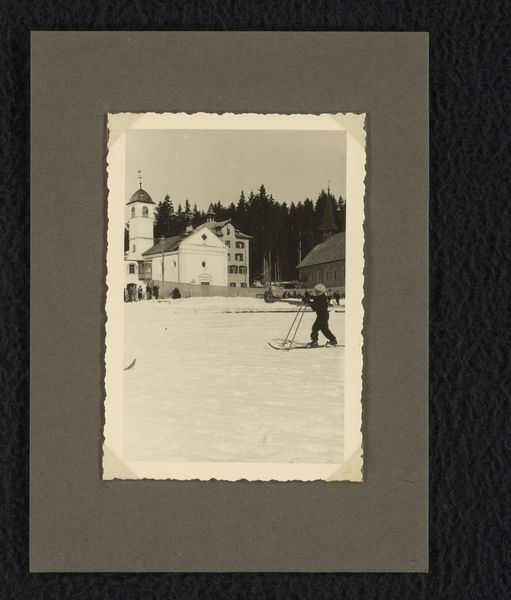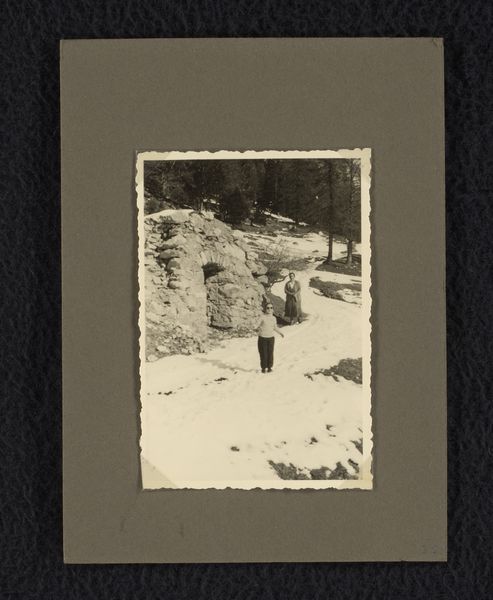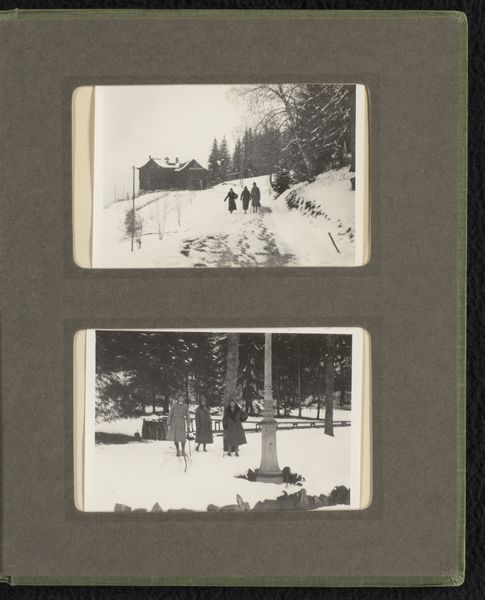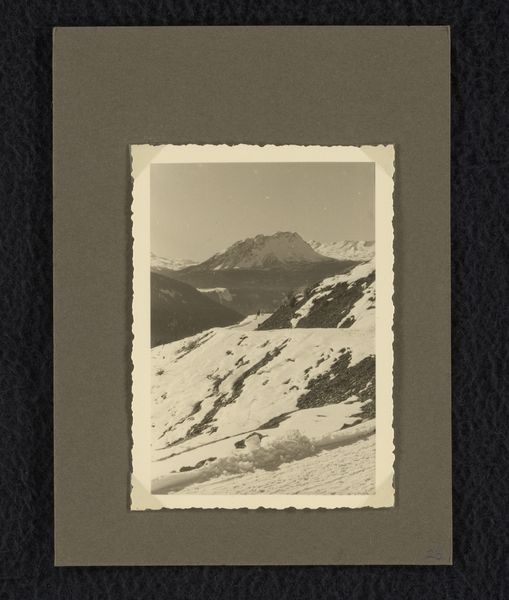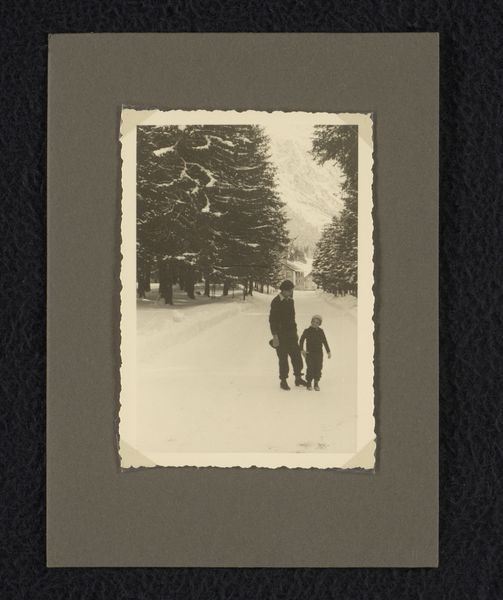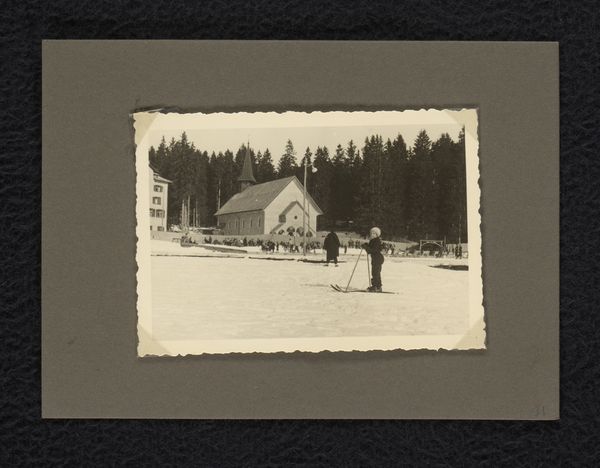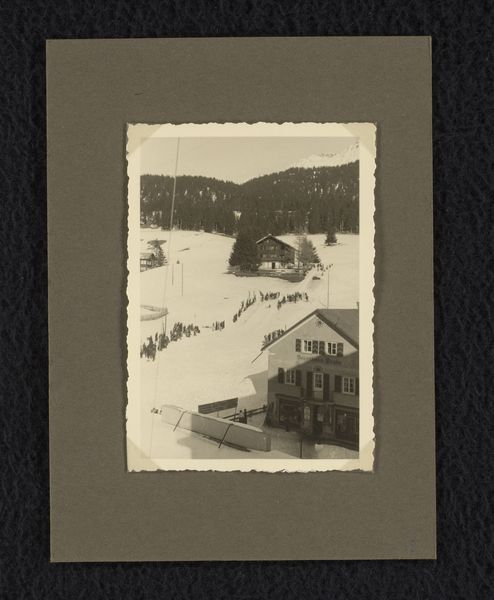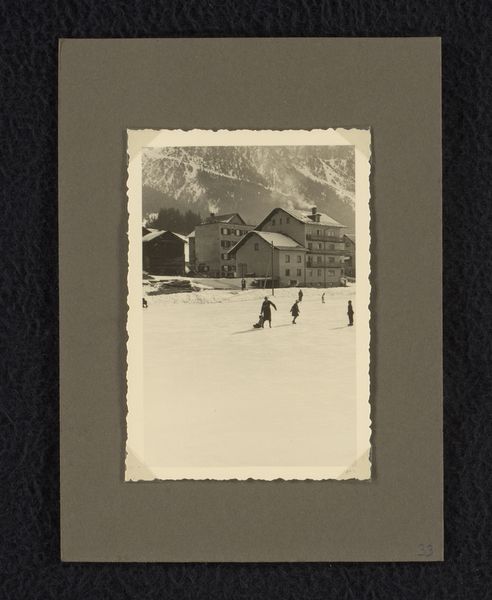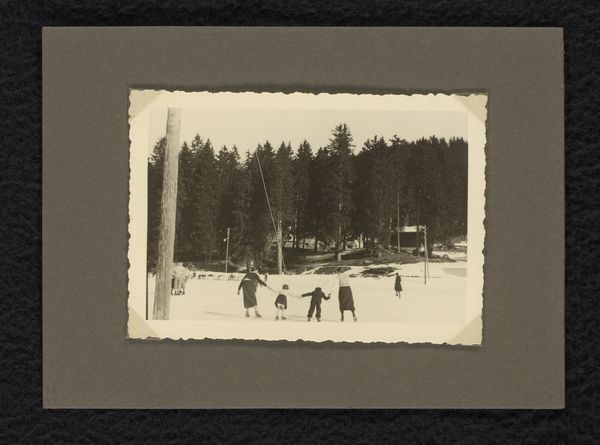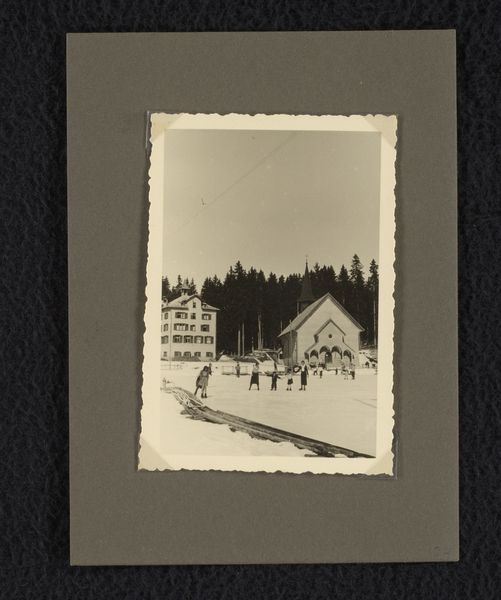
photography, gelatin-silver-print
#
portrait
#
snow
#
landscape
#
photography
#
gelatin-silver-print
#
realism
Dimensions: height 100 mm, width 70 mm, height 147 mm, width 108 mm
Copyright: Rijks Museum: Open Domain
Editor: Here we have "Isabel en een onbekende vrouw," which translates to "Isabel and an Unknown Woman," a gelatin-silver print likely from 1934. It's a portrait set in a snowy landscape, giving it this interesting contrast between intimacy and vastness. What catches my eye is the stark, almost ghostly feel of the snow, which contrasts with the figures. What symbols or cultural narratives do you see playing out here? Curator: The enduring symbol of snow resonates deeply – it often signifies purity, silence, but also isolation and the obliteration of the familiar. In this context, juxtaposed with the two figures, it presents a compelling study in human connection against the backdrop of an indifferent, even formidable, nature. Are they standing at the precipice of something unknown, the future perhaps, or a significant event? Editor: That's an intriguing reading! The obliteration aspect is especially poignant given the subjects. It really does amplify a sense of fragility. Is the "unknown woman" perhaps symbolic? Curator: Indeed. The "unknown woman," whoever she may be, acts as a potent signifier. Consider, too, the power of realism within the photographic medium itself – photography's unique ability to document reality whilst also becoming imbued with the anxieties and social dynamics of its time. This creates layers of interpretation; who gets remembered, who gets forgotten, the stories we carry, and the weight of the unacknowledged past. What personal meaning does the landscape behind them conjure? Editor: Thinking about memory and context, it really underscores the selective nature of what we choose to remember. The landscape, initially picturesque, transforms into this almost haunting background, filled with cultural ghosts. Curator: Exactly. And these photographic traces are powerful precisely because of their supposed objectivity. The photographer chose this view, framing these figures against this backdrop, imbuing a seemingly simple snapshot with layers of meaning far beyond the purely representational. Food for thought, indeed! Editor: Absolutely, thank you! It has made me reflect on how photography might present narrative through absences just as effectively as it does through presences.
Comments
No comments
Be the first to comment and join the conversation on the ultimate creative platform.
